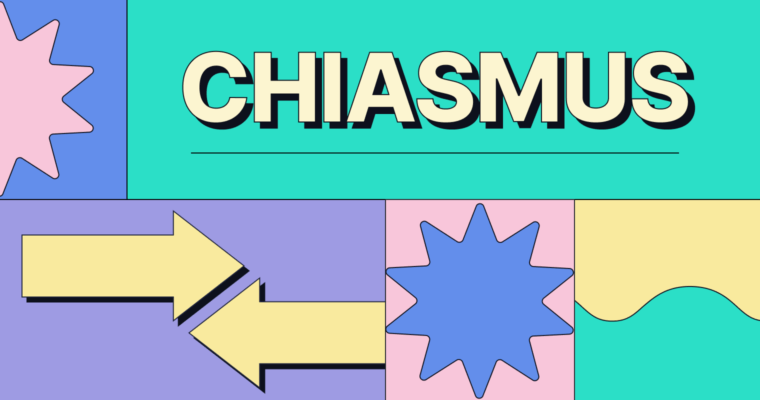
If you don’t continue reading this blog post, you won’t learn about the slippery slope fallacy. And then you won’t be able to recognize it when you read it . . . or when it shows up in your own writing. And if you can’t recognize the slippery slope fallacy, you can’t respond to it appropriately or revise your work to remove it.
Do you see a pattern emerging here, where one action supposedly affects another and another? This, in a nutshell, is the slippery slope fallacy.
What is the slippery slope fallacy?
The slippery slope fallacy is a logical fallacy that claims one event or action will lead to another, more extreme event or action. This could be by directly causing that follow-up event, setting a precedent for it, or simply creating an environment where that follow-up event can occur. Other names for the slippery slope fallacy include the dam burst fallacy, domino fallacy, and thin end of a wedge.
Here is a quick example of the slippery slope fallacy:
- If you don’t take honors courses, you won’t get into a good college.
Obviously, taking a rigorous course load as a high schooler generally makes you a more attractive applicant to colleges. But to claim that you can’t get accepted to a highly ranked college without taking honors courses is inaccurate—and fallacious. That’s what separates the slippery slope fallacy from logically extrapolating how a scenario will likely turn out:
- If you don’t take honors courses, your application may be less attractive to a good college.
We’ll cover non-fallacious uses of the slippery slope later in this post. First, let’s learn exactly what the slippery slope fallacy is, what it covers, and how it’s used.
The slippery slope fallacy is an informal fallacy. That means that the logical disconnect is within the argument’s content, rather than its structure. In other words, it’s possible to make a logical argument in the same format as a slippery slope claim, like in this example:
- If you leave your car unlocked overnight, you face a higher risk of someone breaking into it.
Other informal fallacies include the red herring fallacy and the ad hominem fallacy.
In contrast, a formal fallacy is an argument where the conclusion does not logically follow the premise. The appeal to probability fallacy is a formal fallacy. Here is an example:
- If we cancel our trip, the weather will be beautiful.
With the appeal to probability, the arguer assumes that because something is possible, it’s guaranteed.
But let’s get back to the slippery slope fallacy, which is often used to argue against making a specific decision. This extends to legislation—the slippery slope fallacy comes up a lot in discussions about policy changes. Although it’s usually used to argue against taking a specific action, a slippery slope argument isn’t, by definition, an argument against something. It’s possible to make a slippery slope argument in favor of something, like in these examples:
- By switching to a four-day workweek, employees will have more time to spend with their families. By spending more time with their families, they’ll be happier and more productive at work.
- Eliminating tolls will keep more money in tourists’ pockets, which they’ll spend on local attractions while they’re here.
Keep in mind that even if these outcomes turn out to be true, they are slippery slope arguments because of the assumed connection between the initial change and its result.
What are the different types of slippery slope fallacies?
There are a few different types of slippery slope arguments. Each revolves around the core of the slippery slope fallacy: the assumed relationship between two or more events or outcomes. These are the three types of slippery slope fallacy:
Causal slippery slope arguments
A causal slippery slope argument claims a minor inciting event will inevitably lead to a major outcome. Here are a few examples of the causal slippery slope fallacy:
- If students are required to wear uniforms to school, they’ll do less shopping at local clothing stores. With less business, the stores will close, which will hurt our local economy.
- Widening the road will lead to more traffic in town. More cars on the road will lead to more collisions, which will make our town a dangerous place to drive or walk.
Precedential slippery slope arguments
With a precedential slippery slope argument, the arguer claims that reacting to one issue in a specific way means they will have to react to other issues that may arise in the future in the same way, regardless of the issues’ similarity or lack thereof. Here are a few examples of precedential slippery slope arguments:
- If we allow this customer to give an IOU instead of paying their full bill, we’ll need to accept IOUs from anybody who can’t afford their entire bill.
- If emotional support dogs are allowed on campus, what’s going to stop students from trying to bring emotional support horses, snakes, or scorpions?
Conceptual slippery slope arguments
The last type of slippery slope fallacy, a conceptual slippery slope, argues that because it’s possible to get from one scenario to another through a series of steps, there is no fundamental difference between the two scenarios. Building on this, a conceptual slippery slope claims the two scenarios must be treated the same way because of this lack of fundamental difference.
Look at these examples of the conceptual slippery slope fallacy:
- Lowering the voting age to 16 will make 14-year-olds want to vote, and then once we lower it to 14, we’ll find ourselves asking if we should lower it again to 12 or even 10.
- First they’ll allow residents to keep chickens in their yards, then they’ll start allowing people to keep pigs and sheep. Soon, this entire neighborhood will be one giant livestock farm.
Can a slippery slope argument be logically sound?
Yes. As we mentioned above, it’s possible to make a logical argument using the same kind of reasoning that often leads to a slippery slope fallacy. Look at this example:
- Relaxing our school’s admission criteria will lead to more students attending, which will put a greater strain on our already limited resources.
It’s not illogical to claim that relaxed admission requirements would lead to more students attending a school—after all, more students are now qualified to attend. The difference between a fallacious and non-fallacious slippery slope argument is the likelihood that the initial event will lead to the result claimed. This isn’t an exact science, and because of this, an argument might hover somewhere between logical and fallacious.
As a writer and discerning reader, the best you can do to spot, argue against, and stop yourself from making slippery slope arguments is to separate facts from speculation and research any relevant statistics related to a claim. Determine whether there is evidence to support the claimed relationship between two or more events, and where possible, see if there’s any record of the arguer’s claim actually happening. But keep in mind that just because something has happened in the past doesn’t guarantee that it’ll play out the same way again—though there’s a possibility it will.
This is similar to the strategy you can use to determine whether a claim about somebody is a relevant point or a straw man argument—do the facts support the claim, or is it an oversimplified, extreme take?
It’s also important to review your writing carefully before sending, posting, or submitting it. You might make a slippery slope argument without realizing it or simply present a tenuous relationship between two events as stronger than it is. While you’re at it, it’s a good idea to check your grammar and spelling as well.
As you read through a rough draft, pay close attention to things like your word choice and where you can make your work more efficient and organized. Sometimes, changing a slippery slope argument into a logical one is as simple as swapping out a few words or structuring your claim in a different way.
Slippery slope examples
- If our state legalizes cannabis, it’ll go on to legalize other drugs, and we’ll see a huge increase in addiction problems.
- Letting your sister stay over this weekend will make her think it’s okay to crash here whenever she wants. Soon, she’ll be living here rent-free.
- If I grant deadline extensions for students who take personal time off, I’ll have to start granting them for nonemergency reasons like vacations. Then, deadlines won’t mean anything, so I might as well eliminate those.
Slippery slope FAQs
What is the slippery slope fallacy?
The slippery slope fallacy is the assumption that one event will lead to a specific outcome, or that two distinct events must be handled the same way because of an overlapping characteristic, regardless of the presence of data to support this claim.
How does the slippery slope fallacy work?
The slippery slope fallacy works by creating an assumed relationship between two or more events. For example, an arguer might claim that building new cell phone towers will disorient birds, which will lead to insect infestations due to a lack of predators for them.
What are the different kinds of slippery slope fallacies?
- Causal slippery slope fallacy
- Precedential slippery slope fallacy
- Conceptual slippery slope fallacy






